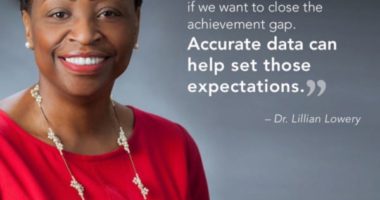A dream deferred: 50 years after Brown v. Board Of Education, the struggle continues…A 50 state look at achievement, attainment and opportunity gaps
(Washington, D.C.) — As the nation celebrates the 50th anniversary of the Brown v. Board of Education decision calling for an end to unequal education in our public schools, the Education Trust today released an extensive 50-state analysis documenting the fact that many of our nations schools are still providing children with an education that is grossly unequal.
These analyses, The Education Watch 2004 State Summary Reports, provide a snapshot of the condition of education in all 50 states, the District of Columbia, and the Nation. The state-specific reports document how, fifty years after Brown v. Board, on every measure - teacher quality, access to high-level curriculum, and state/local education funding - students of color and low-income students continue to get less than their fair share of public educations most critical resources.
In a recent Gallup public opinion poll, 68% of Black voters believe that Black children in the United States do not have equal educational opportunities with White children. The state summary reports released today corroborate these impressions of inequality.
”We have never made good on the promise of equal opportunity in public education,” said Kati Haycock, director of the Education Trust, upon releasing the reports. ”The fact is, we have organized our educational system in this country so that we take children who have less to begin with and then turn around and give them less in school, too. Indeed, we give these children less of all of the things that both research and experience tell us make a difference.”
Where are we now?
Achievement, Attainment and Opportunity Gaps in the States:
The Education Watch State Summary Reports include state specific data on:
Achievement Gaps
- How many students are proficient in reading and mathematics on state assessments? How does achievement on state assessments compare with the state’s proficiency rates on NAEP?
- How do achievement gaps compare across states? Where are gaps the smallest? Where are they the biggest?
- In which states are minority students making the largest gains over time on NAEP?
- Are states making progress getting more students out of NAEP’s below basic category and into basic or above?
Opportunity Gaps
- What are the participation and success rates for different groups of students in high-level courses such as Advanced Placement?
- Who gets assigned to teachers who have a major or minor in their field?
- Who gets more state and local dollars invested in their education?
Attainment Gaps High School and College Success
- Who makes it through high school?
- Who makes it to college?
- Who makes it through college with a degree?
The Achievement Gap Summary Tables: Getting the Complete Picture
In addition to the State Summary Reports, Education Watch 2004 also includes the Achievement Gap Summary Tables, providing a more complete picture of which states are making the most progress raising achievement for different groups of students and which are making much-needed progress moving students out of the lowest performance category on NAEP to higher levels of proficiency. Indeed, these summary tables make clear that the achievement gaps in many states would shrink dramatically- and in some cases disappear entirely- if poor and minority students in those states were taught to the same levels of academic achievement as their counterparts in top-performing, “frontier” states.
For example:
- The White-Latino gap in 4th grade reading in Arizona would shrink by almost two-thirds if Arizonas Latino 4th graders performed as well in reading as Latinos in New Jersey do.
- The White-Latino gap in 8th grade math in California would shrink in half if Californias Latino 8th graders performed as well in math as Latinos in Texas do.
- The White-African American gap in 8 grade science in Tennessee would be cut in a third if Tennessee’s African American 8th graders performed as well in science as African American 8th graders in Virginia do.
”If race and income mattered more than school policy and practice, NAEP scores for minority and poor students would be pretty much the same from state to state,” Haycock pointed out. “But they’re not. Indeed, there’s wide variation. This demonstrates clearly that what we do–and don’t do–in school matters and it matters a lot.”
These gaps have real implications for students. By the time they reach 8th grade, minority students nationally are about three years behind other students. By the time they reach 12th grade, those students are four years behind. Indeed, 17-year-old African American and Latino students demonstrate skills in reading and math similar to those of 13-year-old Whites.
But some states have much smaller gaps between groups. The gap between White and Latino 8th graders in science performance, for example, ranges from 17 points in Montana to 48 points in Alabama. That puts Latino students less than two years behind Whites in Montana, compared to almost five years behind in Alabama.
Raising the performance of poor and minority students to the same level as in frontier states, though, is not enough. Many frontier states still have big achievement gaps between groups of students. Connecticut, for example, which has among the highest performing African American 4th graders on the NAEP reading test, also has one of the largest gaps between White and African American students on that test.
But such large gaps are not inevitable in high performing states. Virginia, which has the second smallest gap between White and Latino 8th graders on the NAEP reading test, also has the highest average score for Latino students on that test and the fourth-highest score for White students.
“All states would do well to take a lesson from Virginia on this,” said Haycock. “Closing gaps while simultaneously getting higher achievement for all groups of students is not only possible, it is a necessity.”
Delivering on the promise of American Education
American educators as a whole need to do what high-performing schools, districts and states are already doing: to look honestly at their data, to confront and close opportunity gaps, to replace low-level, non-systematic instruction with higher level, systematic teaching, and to improve achievement for all groups of children.
The Education Trust calls on K-12, higher education, parents and community advocates, business leaders, and policymakers to engage in meaningful K-16 reform efforts to improve the educational experiences of all children. With data in hand, policymakers, educators and communities must take action to address this nations longstanding achievement gap.
High impact action strategies include:
- Getting students off to a strong start in the elementary years, especially in reading, by helping teachers to master systematic, research-tested instructional practices;
- Ensuring that all students are placed in rigorous courses in middle and high school;
- Ensuring that all students have access to teachers who can provide instruction equal to the quality of content, and getting our strongest teachers to the students who need them the most; and
- Providing extra time and instruction for students who arrive behind, and extra support to help teachers improve their effectiveness.
The country is discussing achievement gaps more openly and honestly than ever before. Yet, despite very powerful images of success and progress from some of our most challenged schools and districts, there are still those who doubt the capacity of public education to reverse longstanding achievement gaps. “It’s not clear at this moment which side will prevail – the can do side or the cant do side,” said Haycock. ”What is clear,” Haycock continued, ”is that, fifty years after the Brown decision launched us down the path to equalizing opportunity for all young Americans, the kids cannot afford to wait any longer. We can both raise overall achievement and close gaps in the rates at which students pass state assessments. The only question is whether we will.”



